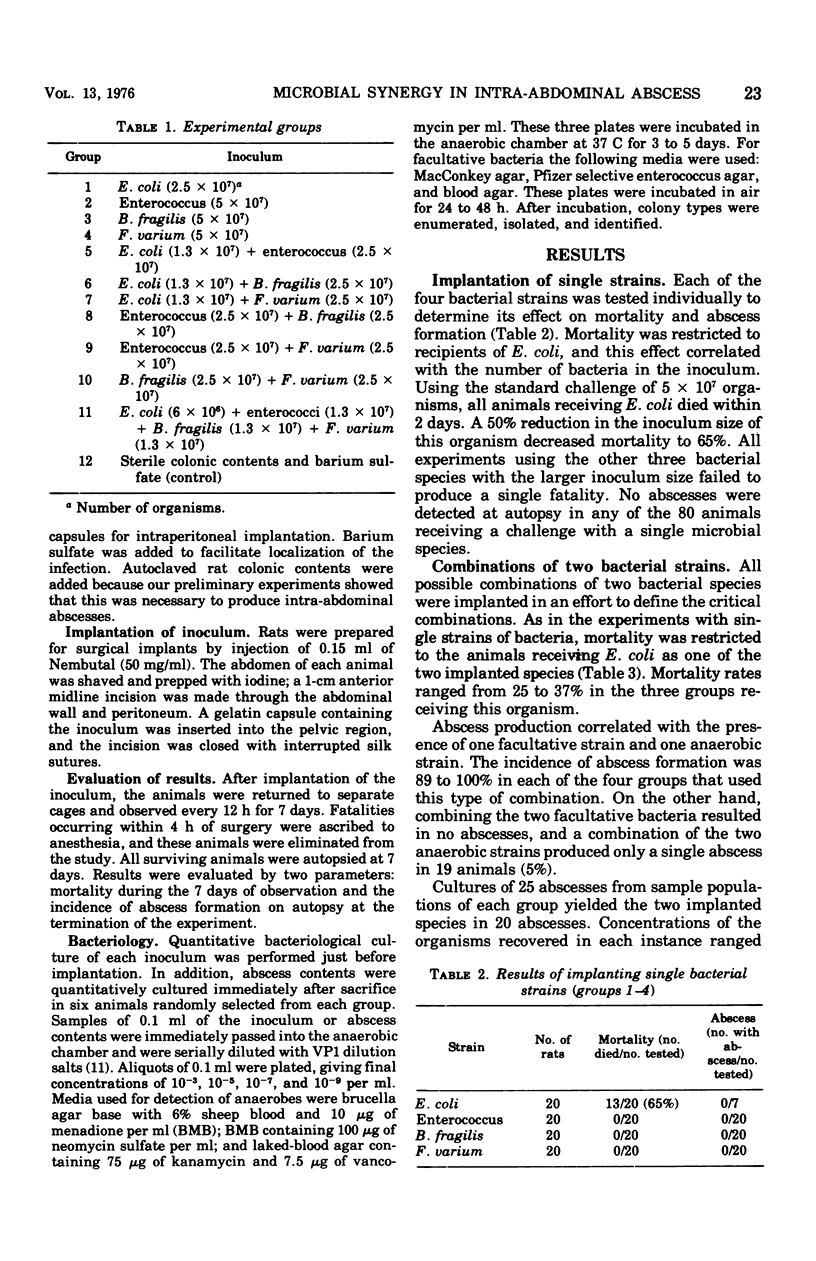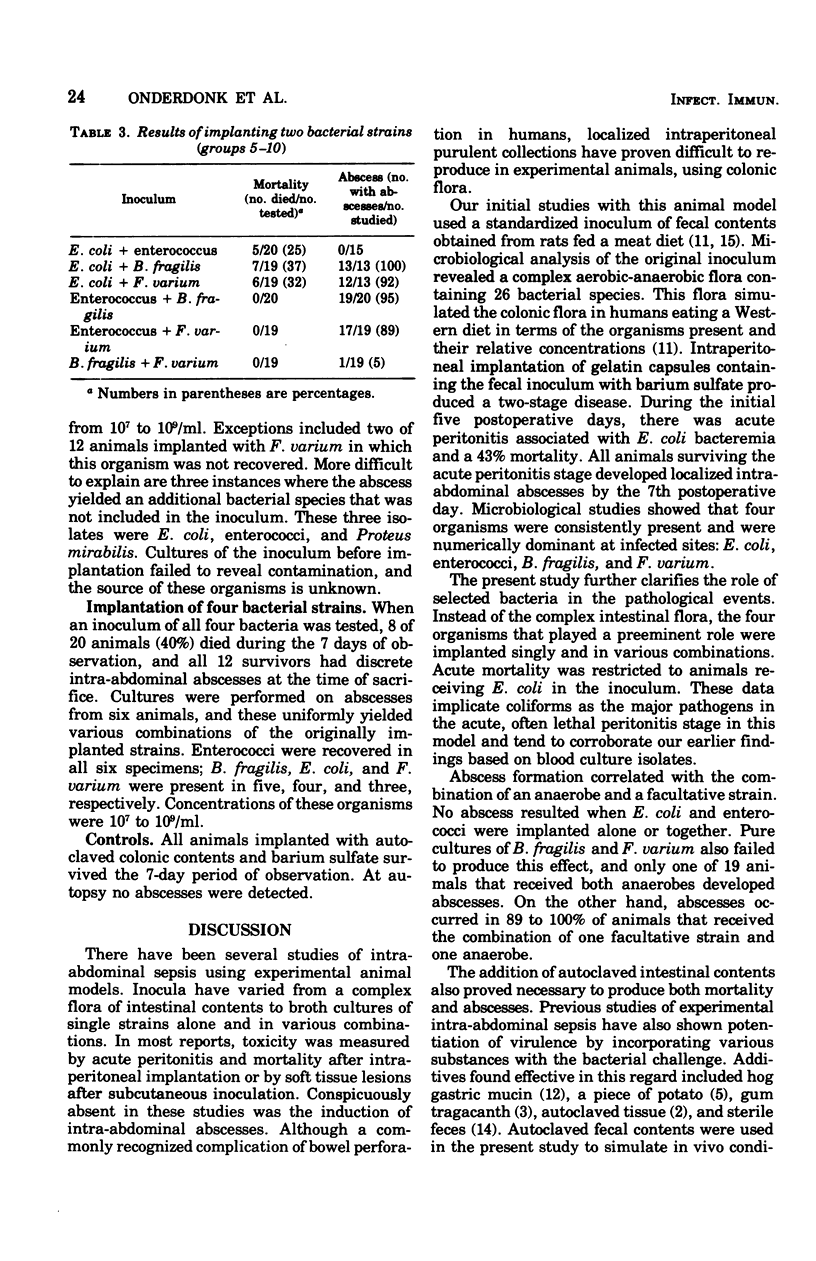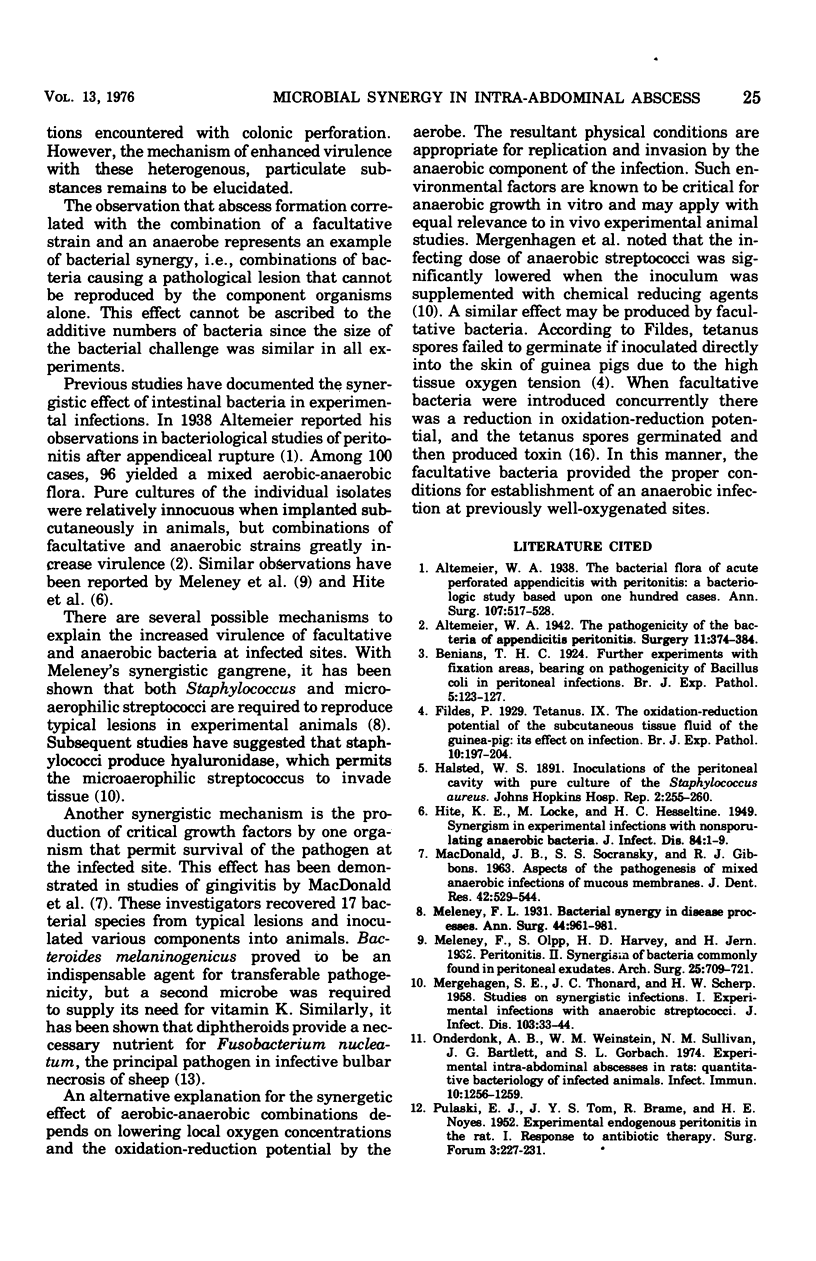Abstract
Intra-abdominal sepsis was studied in Wistar rats by using four microbial species: Escherichia coli, enterococci, Bacteroides fragilis, and Fusobacterium varium. These organisms were implanted into the peritoneal cavity singly and in all possible dual combinations. Results were evaluated by mortality rates and the incidence of intra-abdominal abscesses on autopsy following sacrifice after 7 days. Mortality was restricted to recipients of E. coli, thus implicating coliforms in the acute lethality associated with this experimental model. Intra-abdominal abscesses were produced in 61 of 95 (94%) animals that received the combination of an anaerobe and a facultative organism. Abscesses failed to form with any single strain or with E. coli plus enterococci, and they were detected in one 1 of 19 animals receiving B. fragilis plus F. varium. These results suggest that intra-abdominal abscess formation is related to synergy between anaerobes and facultative bacteria.
Full text
PDF




Selected References
These references are in PubMed. This may not be the complete list of references from this article.
- Altemeier W. A. THE BACTERIAL FLORA OF ACUTE PERFORATED APPENDICITIS WITH PERITONITIS: A BACTERIOLOGIC STUDY BASED UPON ONE HUNDRED CASES. Ann Surg. 1938 Apr;107(4):517–528. doi: 10.1097/00000658-193804000-00006. [DOI] [PMC free article] [PubMed] [Google Scholar]
- MERGENHAGEN S. E., THONARD J. C., SCHERP H. W. Studies on synergistic infections. I. Experimental infections with anaerobic streptococci. J Infect Dis. 1958 Jul-Aug;103(1):33–44. doi: 10.1093/infdis/103.1.33. [DOI] [PubMed] [Google Scholar]
- Meleney F. L. BACTERIAL SYNERGISM IN DISEASE PROCESSES: WITH A CONFIRMATION OF THE SYNERGISTIC BACTERIAL ETIOLOGY OF A CERTAIN TYPE OF PROGRESSIVE GANGRENE OF THE ABDOMINAL WALL. Ann Surg. 1931 Dec;94(6):961–981. doi: 10.1097/00000658-193112000-00001. [DOI] [PMC free article] [PubMed] [Google Scholar]
- Onderdonk A. B., Weinstein W. M., Sullivan N. M., Bartlett J. G., Gorbach S. L. Experimental intra-abdominal abscesses in rats: quantitative bacteriology of infected animals. Infect Immun. 1974 Dec;10(6):1256–1259. doi: 10.1128/iai.10.6.1256-1259.1974. [DOI] [PMC free article] [PubMed] [Google Scholar]
- Roberts D. S. The pathogenic synergy of Fusiformis necrophorus and Corynebacterium pyogenes. II. The response of F. necrophorus to a filterable product of C. pyogenes. Br J Exp Pathol. 1967 Dec;48(6):674–679. [PMC free article] [PubMed] [Google Scholar]
- Sharbaugh R. J., Rambo W. M. A new model for producing experimental fecal peritonitis. Surg Gynecol Obstet. 1971 Nov;133(5):843–845. [PubMed] [Google Scholar]
- Weinstein W. M., Onderdonk A. B., Bartlett J. G., Gorbach S. L. Experimental intra-abdominal abscesses in rats: development of an experimental model. Infect Immun. 1974 Dec;10(6):1250–1255. doi: 10.1128/iai.10.6.1250-1255.1974. [DOI] [PMC free article] [PubMed] [Google Scholar]


